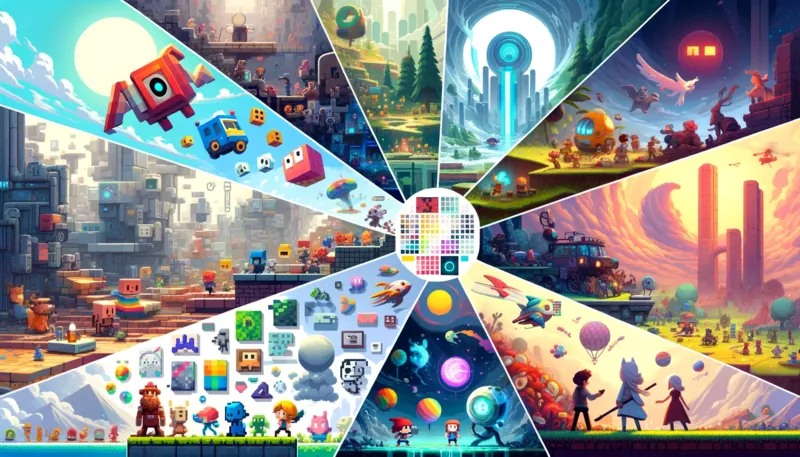Exploring the World of Godot Tech Demos

The Godot Engine, a free and open-source game development platform, has been making waves in the gaming industry with its versatile and powerful capabilities. Particularly noteworthy are the tech demos created using Godot, which showcase the engine's potential for both novice and seasoned developers. This article delves into various Godot tech demos, exploring their features, innovation, and how they're shaping the future of game development.
The Essence of Godot Tech Demos
Godot tech demos are more than just showcases of the engine's capabilities; they're a testament to the creativity and skill of the Godot community. These demos range from simple 2D games to complex 3D environments, offering a glimpse into the engine's flexibility and adaptability across different gaming genres and styles.
Key Features in Godot 4.1 Demos
The recent update to Godot 4.1 brought a slew of enhancements, reflected in the tech demos. Updated demos like the Matrix Transform, Mobile Sensors, and WebSocket Minimal highlight improved functionality in areas like mobile gaming, networking, and 3D transformations.
Diverse Showcase by Godot Community
The Godot community, comprising individual developers and studios, contributes significantly to the demo ecosystem. Studios like 2Dynamic Games, Save Sloth Studios, and Whiskeybarrel Studios, along with individual developers like Raffaele Picca and Richard Hörnig, have created diverse demos, showcasing various genres and artistic styles.
Learning and Development with GDQuest Demos
GDQuest, a prominent name in Godot education, offers a collection of open-source demos. These demos serve dual purposes: aiding learning and supporting GDQuest's work. They cover a wide range of topics, from TPS (Third-Person Shooter) mechanics to stylized sky creation, offering practical learning tools for game developers.
Innovation in Godot 4 Demos
Godot 4 demos exhibit the engine's advancements, particularly in 2D and 3D functionalities. Features like 2D dynamic lights, 3D animation trees with audio integration, and physics benchmarks are just a few examples of the new capabilities offered in these demos.
Special Focus: Procedural Generation and Shaders
A significant aspect of recent Godot demos is the focus on procedural generation and shaders. These techniques are crucial for creating dynamic, visually appealing games. Demos covering rhythm games, real-time tactical combat, and JRPG combat provide insights into these advanced development techniques.
Godot 4's Enhanced Visuals
With the release of Godot 4, the engine introduced a new Vulkan renderer, elevating the visual quality of games. This advancement is evident in demos that focus on 3D terrain and material testing, showcasing Godot's improved rendering capabilities.
Year in Review: Evolutions in Godot 4.0 and 3.2.x
Reflecting on Godot's progress, the 2020 Year in Review highlighted the new features in Godot 4.0 and 3.2.x. This retrospective offers valuable context for understanding the evolution of the tech demos and the engine's ongoing development.
Conclusion
Godot tech demos represent the cutting edge of game development, offering both a showcase of the engine's capabilities and a learning resource for the community. As Godot continues to evolve, these demos not only reflect its current state but also hint at the future possibilities of gaming. They stand as a testament to the power of open-source collaboration and innovation in the gaming industry.
